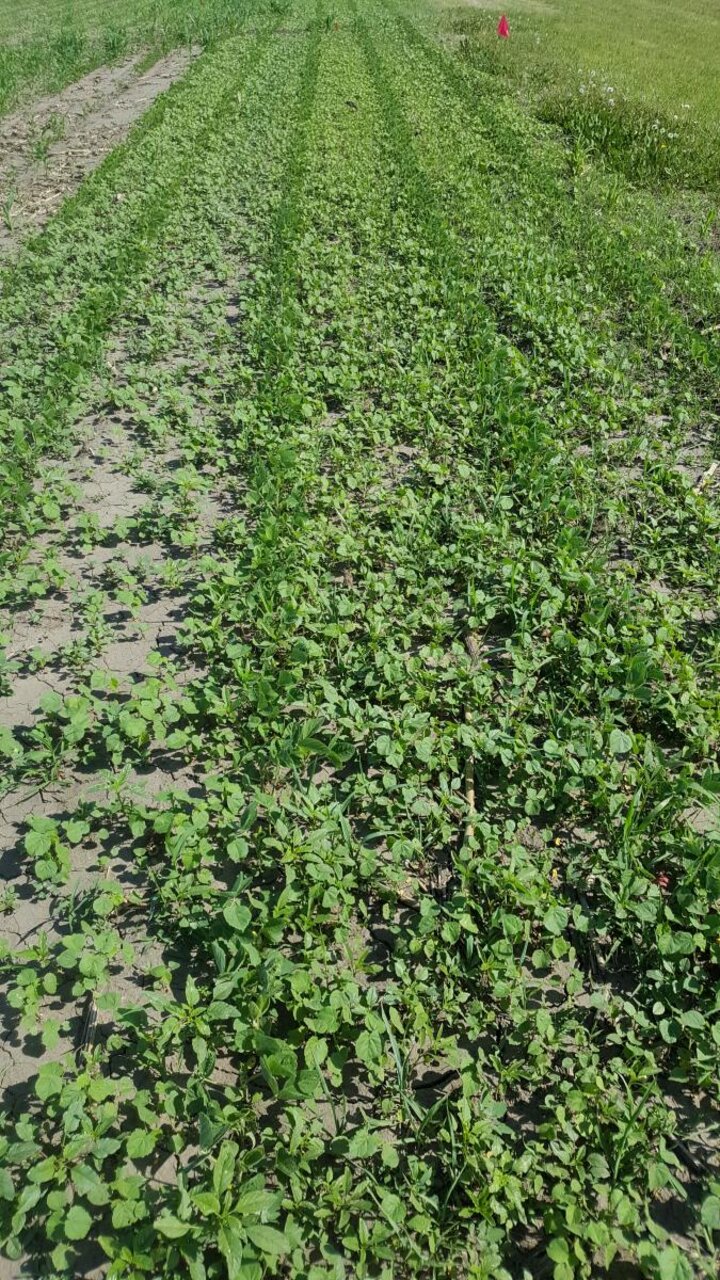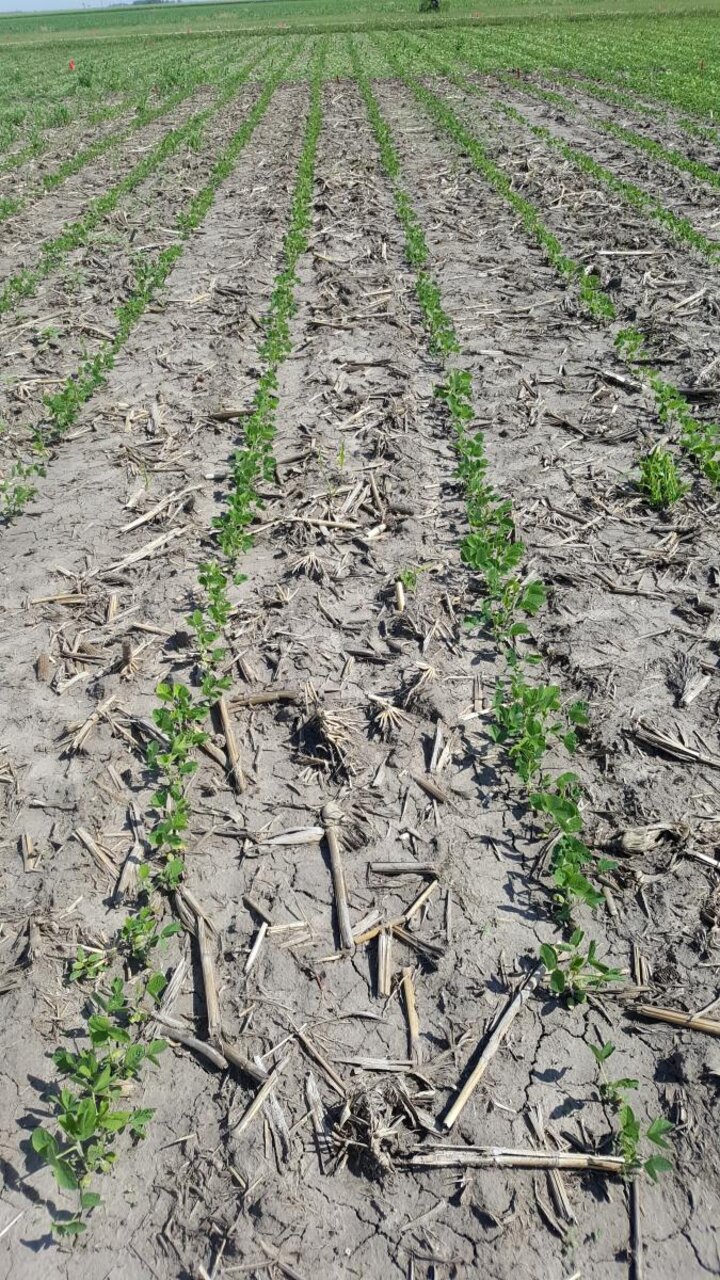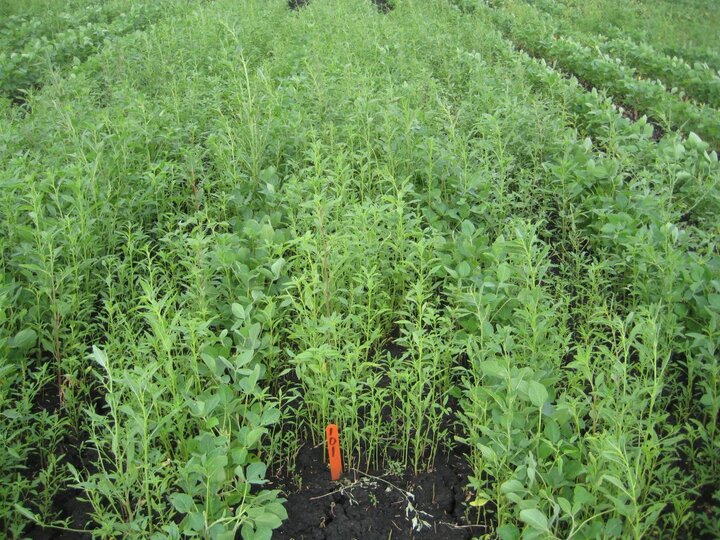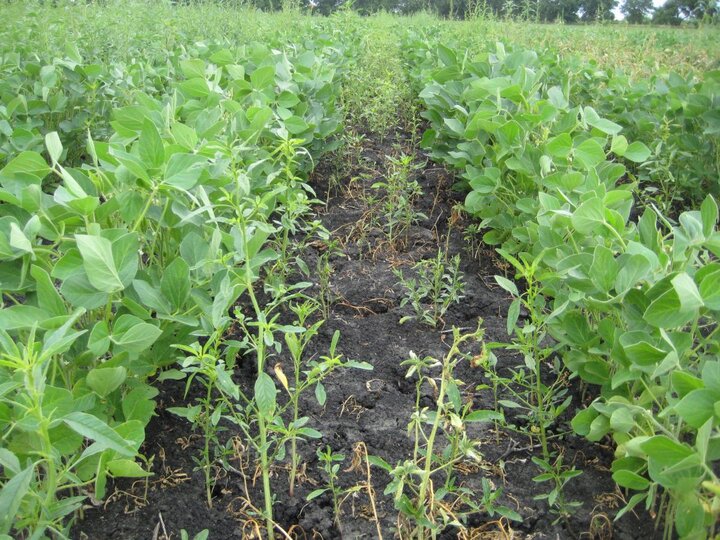

Figure 1a-b. Field areas that were untreated (left) and treated (right) illustrate the importance of pre-emergence residual herbicide for weed control in soybean. (Photos by Amit Jhala)


Figure 2a-b. Control of glyphosate-resistant common waterhemp in soybean without (left) and with (right) a pre-emergence herbicide with multiple sites of action.
Post-emergence herbicide options for weed control in soybean are limited, particularly where glyphosate-resistant weeds are a problem. Six weed species in Nebraska have now been confirmed resistant to glyphosate and their populations are widespread. Summer annual weed species such as common waterhemp, Palmer amaranth, velvetleaf, and foxtail emerge at the same time as soybean and can be particularly troublesome in some parts of Nebraska. In addition, many populations of these weed species in Nebraska are glyphosate-resistant. Weed management programs using other herbicides in addition to glyphosate are needed to manage these populations.
Why early-season weed control in soybean is important
- Pre-emergence, residual herbicides
-
- mitigate yield loss due to weed competition,
- provide a longer time for soybean to establish, and
- reduce the selection pressure for herbicide resistance to post-emergence herbicides because fewer weeds will be exposed to post-emergence herbicides.
In addition, including pre-emergence herbicides can reduce post-emergence herbicide applications and protect against early-season weed competition when weather or busy schedules prohibit a timely post-emergence application (Figure 1a-b).
- Applying a pre-emergence herbicide with multiple sites of action is particularly important in fields where herbicide-resistant weeds are present or suspected. Several new herbicides registered in soybean are a premix of herbicides with different sites of action. An effective pre-emergence application can go a long way toward controlling a problem weed population, especially when post-emergence herbicide options are limited or limited in effectiveness in soybean.
University of Nebraska-Lincoln research has shown that adding a residual herbicide helps keep fields free of yield-robbing weeds longer and improves yields and resistance management practices. For example, a two-year university study demonstrated season-long control of glyphosate-resistant common waterhemp when a pre-emergence herbicide with multiple sites of action was applied and followed by a post-emergence herbicide (Figure 2a-b).
Yet with several products on the market today, it is important for farmers to know what to look for in a residual herbicide. Selection should be based on one or more of the following:
- Weed control spectrum
- Length of residual activity
- Herbicide site of action
- Application timing flexibility
- Ability to control herbicide-resistant weeds
- Crop rotational flexibility

Why you need to apply pre-emergence herbicides in Roundup Ready 2 Xtend soybean
Roundup Ready 2 Xtend soybean, also known as Xtend soybean, first became commercially available for the 2017 growing season. If you are planting Xtend soybean this year, you still need to consider applying a pre-emergence herbicide. Do NOT rely only on dicamba (XtendiMax, FeXapan, or Engenia) for weed control in Xtend soybean and restrict application to a single application, possibly pre-plant or early post-emergence. Relying only on a post-emergence herbicide may result in only partial weed control (Figure 3).
Remember that pre-emergence, residual herbicides labeled in Roundup Ready soybean also can be applied in Xtend soybean. Relying only on a post-emergence herbicide may result in reduced weed control and more selection pressure on weeds. In short, application of pre-emergence, residual herbicide within two to three days after planting any type of soybean is the foundation of effective weed control.
